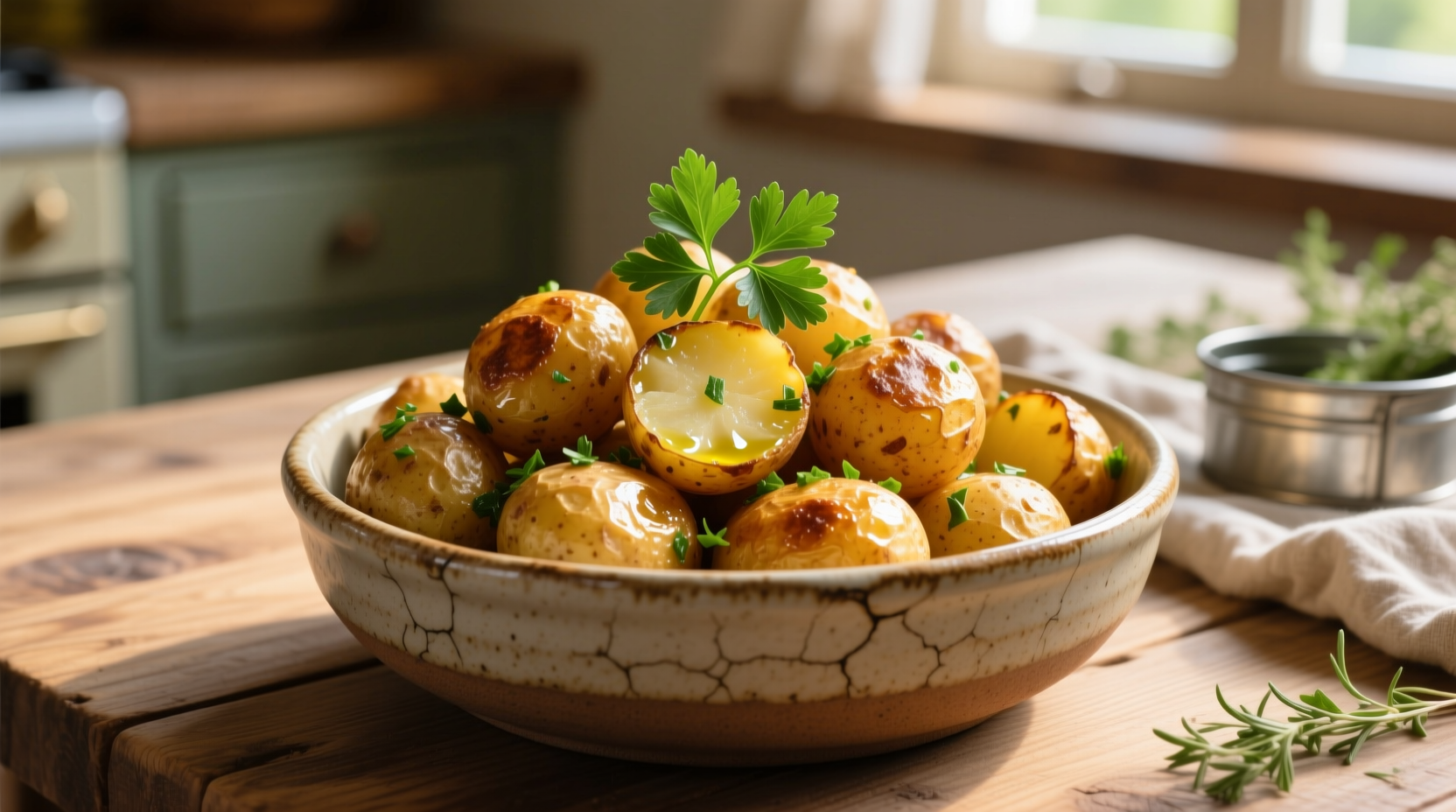The Secret Behind Perfect Parsley Potatoes
What makes parsley potatoes stand out among simple side dishes? It’s the brilliant synergy between earthy potatoes and bright parsley. Food science reveals that parsley contains volatile compounds that activate different taste receptors than potatoes alone, creating a more complex flavor profile. When combined with garlic and quality olive oil, you get a dish where each component enhances the others without overpowering.
Why This Classic Combination Works
Professional chefs consistently return to this preparation for good reason. The starch in potatoes absorbs flavors exceptionally well, while parsley’s chlorophyll content provides a fresh counterpoint to the earthiness. Unlike many herb preparations, parsley maintains its vibrant color and flavor when added at the end of cooking—preserving both visual appeal and nutritional benefits.
Potato Selection: The Foundation of Success
Your choice of potato dramatically impacts the final result. Here’s how common varieties perform:
| Potato Variety | Best Cooking Method | Texture Result | Flavor Compatibility |
|---|---|---|---|
| Yukon Gold | Boiling or roasting | Creamy interior, golden crust | Ideal for most preparations |
| Russet | Roasting only | Fluffy interior, extra-crispy exterior | Best with robust meats |
| Red Bliss | Boiling only | Firm texture, holds shape | Perfect for salads |
| Fingerling | Roasting | Firm yet creamy | Elegant presentation |
According to USDA agricultural research, Yukon Gold potatoes contain 20% more natural sugars than Russets, creating better caramelization during roasting while maintaining structural integrity when boiled.
Step-by-Step Preparation Guide
Follow this professional technique for consistently perfect results:
Preparation Essentials
- Cut uniformly: 1–1.5 inch cubes ensure even cooking
- Start in cold water: For boiling method, prevents uneven texture
- Dry thoroughly: Critical step for crispy roasted potatoes
Boiling Method (15 minutes)
- Place potatoes in cold salted water (1 Tbsp salt per quart)
- Bring to gentle boil, cook 12–15 minutes until fork-tender
- Drain thoroughly and return to pot over low heat for 1 minute to evaporate excess moisture
- Toss with 2 Tbsp olive oil, 3 minced garlic cloves, and 1/4 cup chopped parsley
Roasting Method (35 minutes)
- Preheat oven to 425°F (220°C)
- Toss dried potato cubes with 3 Tbsp olive oil, salt, and pepper
- Spread in single layer on parchment-lined baking sheet
- Roast 25–30 minutes, flipping halfway, until golden and crispy
- Remove from oven, immediately toss with garlic and parsley

Pro Techniques for Flavor Enhancement
Take your parsley potatoes from good to exceptional with these chef-tested methods:
Garlic Integration
Raw garlic added at the end provides bright flavor, but for deeper complexity, try this professional technique: "Sweat minced garlic in olive oil over low heat for 2 minutes until fragrant but not browned, then immediately remove from heat before adding to potatoes." This extracts maximum flavor without bitterness.
Parsley Selection Matters
Flat-leaf (Italian) parsley offers more robust flavor than curly parsley, with higher concentrations of apiol and myristicin compounds that create that distinctive fresh taste. For best results, use leaves only—stems can be bitter. Chop just before adding to preserve volatile flavor compounds.
When to Choose Boiled vs. Roasted
Understanding context boundaries helps you select the right preparation:
- Choose boiled: When serving with delicate proteins like fish or chicken, or when you need a quicker preparation
- Choose roasted: For heartier meals with red meats, or when you want maximum texture contrast
- Avoid both: When serving extremely spicy main courses that would compete with the delicate parsley flavor
Food historians note that parsley potatoes evolved from European peasant cooking traditions. According to the Oxford Symposium on Food & Cookery archives, the combination became popular in 19th century France when potatoes gained acceptance after initial resistance, pairing the newly embraced tuber with the widely available herb.
Serving and Pairing Recommendations
Parsley potatoes shine alongside:
- Grilled salmon with lemon-dill sauce
- Roast chicken with garlic and herbs
- Pan-seared pork chops with apple compote
- Veggie burgers for a complete plant-based meal
For presentation, sprinkle with additional chopped parsley and a twist of fresh lemon juice just before serving. The acid brightens the entire dish without overwhelming the delicate herb flavor.
Nutritional Benefits Worth Noting
Beyond delicious flavor, this simple preparation offers notable nutritional advantages. According to USDA FoodData Central, a 1-cup serving of properly prepared parsley potatoes provides:
- Significant potassium (15% of daily value)
- Excellent vitamin C (25% of daily value)
- Substantial vitamin K from parsley (40% of daily value)
- Healthy monounsaturated fats from olive oil
The combination delivers more nutritional value than plain potatoes, as parsley contributes additional vitamins and antioxidants that complement the potato’s natural nutrient profile.
Troubleshooting Common Issues
Fix these frequent problems with professional solutions:
- Soggy potatoes: Didn’t dry thoroughly before roasting or used too much oil
- Muted parsley flavor: Added too early in cooking or used dried instead of fresh
- Bitter garlic: Burned during cooking or used too much raw
- Uneven cooking: Inconsistent potato cube sizes
Storage and Reheating Guidelines
Store leftovers in an airtight container in the refrigerator for up to 3 days. For best results when reheating:
- Oven method: 375°F (190°C) for 10–15 minutes on a baking sheet
- Air fryer: 350°F (175°C) for 5–7 minutes
- Avoid microwave: Creates uneven texture and sogginess
For creative next-day uses, try adding leftover parsley potatoes to omelets, blending into potato soup, or slicing thinly for a breakfast hash.











 浙公网安备
33010002000092号
浙公网安备
33010002000092号 浙B2-20120091-4
浙B2-20120091-4